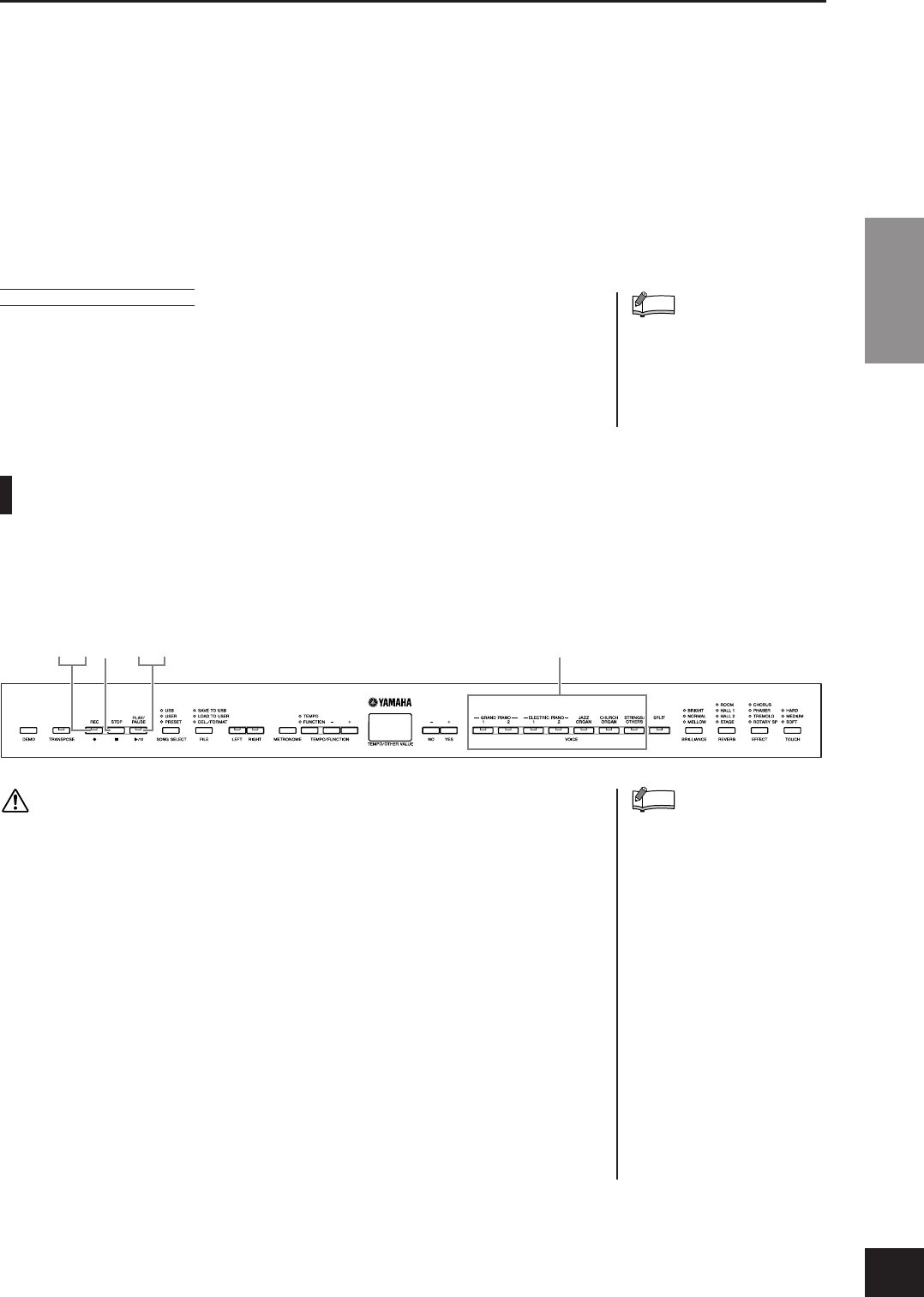
Recording Your Performance
P-155 Owner’s Manual
ENGLISH
25
Recording Your Performance
The ability to record and play back what you’ve played on the keyboard can be an effective practice
aid. You can, for example, record just the left-hand part, and then practice the right-hand part
while playing back the recorded left-hand part. Or, since you can record up to two parts separately,
you could record the left- and right-hand parts separately, or record both parts of a duet and hear
how they sound when played back. The two-part Song Recorder on the instrument allows the
recording of up to three songs (U01–U03) or up to a maximum of about 100KB (11,000 notes) in
each song on the instrument depending on pedal usage and other factors.
You cannot record the performance to the connected USB storage device directly. The recorded
songs are saved to the instrument automatically. If you want to save data to the device, perform the
Save operation (page 31) after stopping recording.
Recording a performance quickly
This convenient and simple recording method lets you quickly record your performance without
specifying the recording parts — useful, for example, in recording solo piano pieces.
In this way, the performance is automatically recorded to right part.
CAUTION
To avoid erasing previously recorded song(s):
If the file contains data, the part indicator lights up green when you select a file. Note
that recording new data on this part will erase the existing data.
1. Select the voice you want to record (or voices if you
will be using Dual or Split), before you begin to
record.
Make any other desired settings (reverb, effect, etc.) as well. You might also want
to set the volume.
You can also adjust the playback volume using the [MASTER VOLUME] dial.
You can record your performance
(audio data) to an MD recorder or
other recording device via the
AUX OUT jack (page 47).
NOTE
TERMINOLOGY
Recording vs. Saving:
The format of performance data recorded on an MD differs from that of data recorded on the instrument.
An MD records audio signals. The instrument “saves” information regarding note timing, voices, and a
tempo value, but not audio signals. When you play back recorded songs, the instrument produces
sound based on the saved information. Therefore, recording on the instrument may be more accurately
called “saving information.” However, this book often uses the word “recording” because it seems to
make more sense.
1
2 4
43 5
Record mode cannot be engaged
during Demo/PRESET/USER/USB
song playback or in the File Oper-
ation mode.
NOTE


















